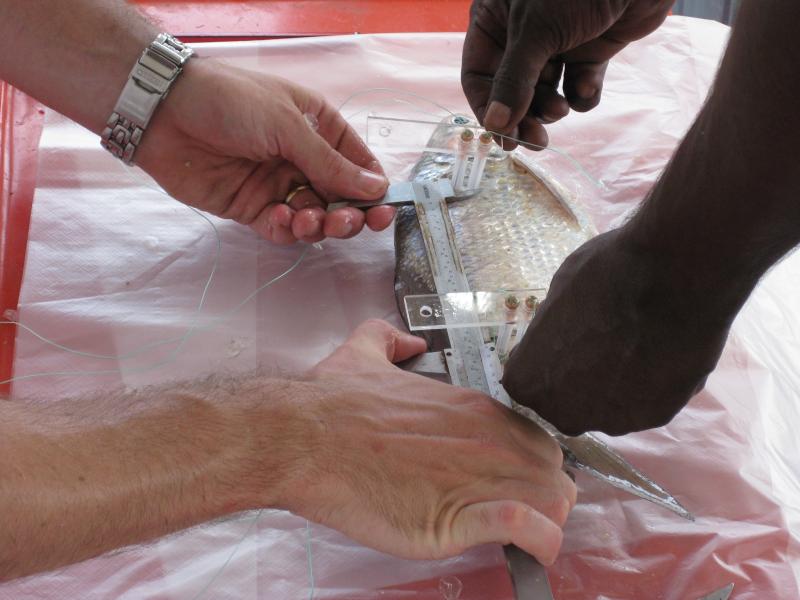In 2004 a partnership was formed between the Wagiman Traditional Owners and researchers from the Tropical Rivers and Coastal Knowledge consortium (TRaCK, a $30 million Australian Government funded research consortium). Initially developed with the objective of working together for three years on a project investigating fish and flows in the Daly River, the partnership has continued for over 16 years fostering collaboration among more than 200 people and resulting in multiple benefits well beyond the initial project.
The partnership has increased the capacity of Wagiman people to achieve accredited training and employment as well as to contribute to water and catchment planning at local and Territory levels. These outcomes have been achieved through the long-term nature and strength of the partnership – through years of talking, listening and working together, through Wagiman people being involved in many different aspects of the research, in planning processes and in formal presentations, and through the support and opportunities provided by the strong relationships and mutual trust created by the partnership.
The partnership has also improved Indigenous collaboration across the NESP through its participants sharing and promoting its benefits and attributes. It has increased the desire and capacity of many other researchers to undertake cross-cultural research through hearing about a real example of what can be achieved. For the many scientists involved in the work, the experience of working with Wagiman people has enriched their knowledge and perspectives and, for some, touched hearts.
Partners have together recorded Wagiman traditional knowledge and documented the cultural significance of many fish species, as well as integrated western science and Indigenous ecological knowledge. This has generated greater recognition of the value of Indigenous ecological knowledge, improved research results and facilitated the use of Wagiman language and knowledge for managing country.

Improving understanding of the freshwater fish in the Daly River has supported water planning and management of the river, photo TRaCK.
This collaboration has resulted in one of Australia’s longest-running freshwater fish datasets, and helped determine the environmental water requirements of many species through understanding how much water different species need at different times of year. Research results have been shared with the community and government to support water planning and management of the Daly River. The knowledge generated has resulted in recognition of the nationally significant conservation values of the Daly River, and contributed to improved water planning and catchment management at local to international scales.
The partnership continues today and serves as a model for cross-cultural collaboration in ecological research and natural resource management activities, with its impacts continuing to grow.
Testimonials
Traditional Owners could translate language now of fish and opportunity for younger people to get involved learn about country.
– Traditional Owner Elder
Science and IEK are the basis for good conservation in the Daly catchment, and this project brought a unique approach through scientists partnering with, and paying real wages to, Traditional Owners to help with the research and build capacity.
– Stakeholder
Rangers already had training about land management –TOs had cultural knowledge from family passed down – so this was used to put black and white knowledge together to a better understanding.
– Traditional Owner Elder
The Daly River is the river being targeted for irrigation development and land clearing in the NT; hence I wanted to be involved in supporting the project so it delivered good and usable knowledge.
– Stakeholder
Research outputs
The research has produced multiple outputs which have been actively shared with: (1) Wagiman and other Traditional Owners through presentations, videos, newsletters, a Wagiman language fish poster and a seasonal calendar; (2) NT government and associated groups involved in water planning for the Daly River through publications and meetings; (3) the scientific community through ~150 publications and presentations, often jointly with Wagiman; (4) and the general public through numerous presentations at water advisory committee and other community meetings, and local media stories. Importantly, the project has served as a model for cross-cultural collaboration in ecological research and led to improved Indigenous engagement across national research programs and scientific societies.
Journal articles
Presentations
Media coverage
Newsletters
Articles & workshop reports
Indigenous focused products
Video
Report
Attributions